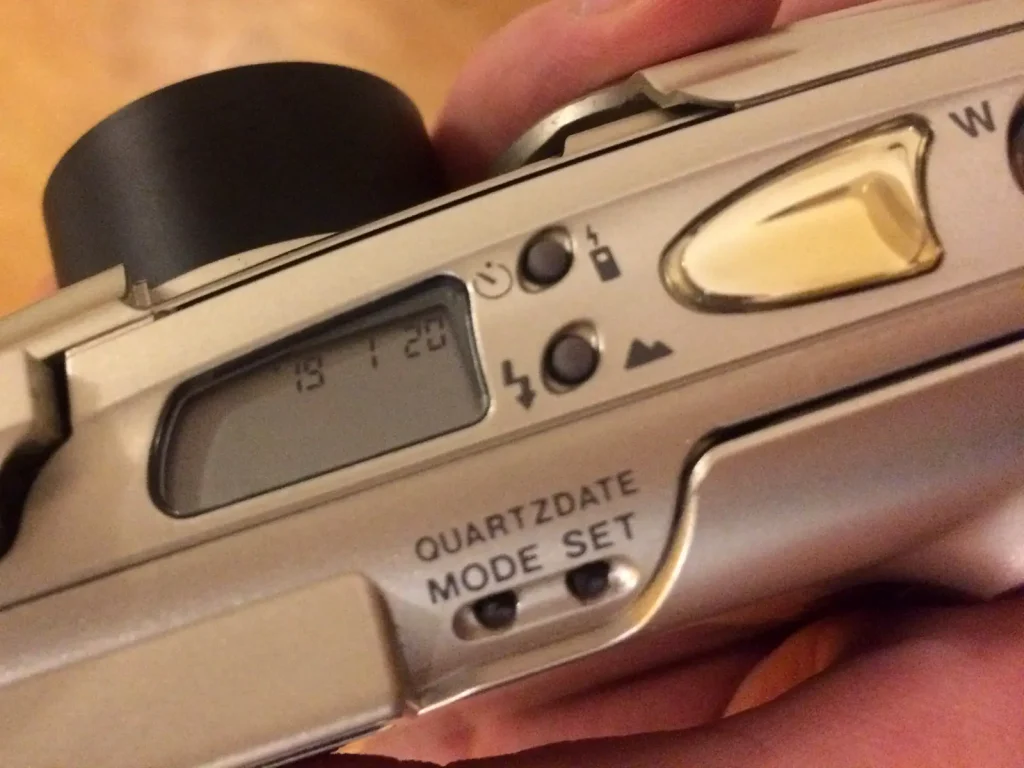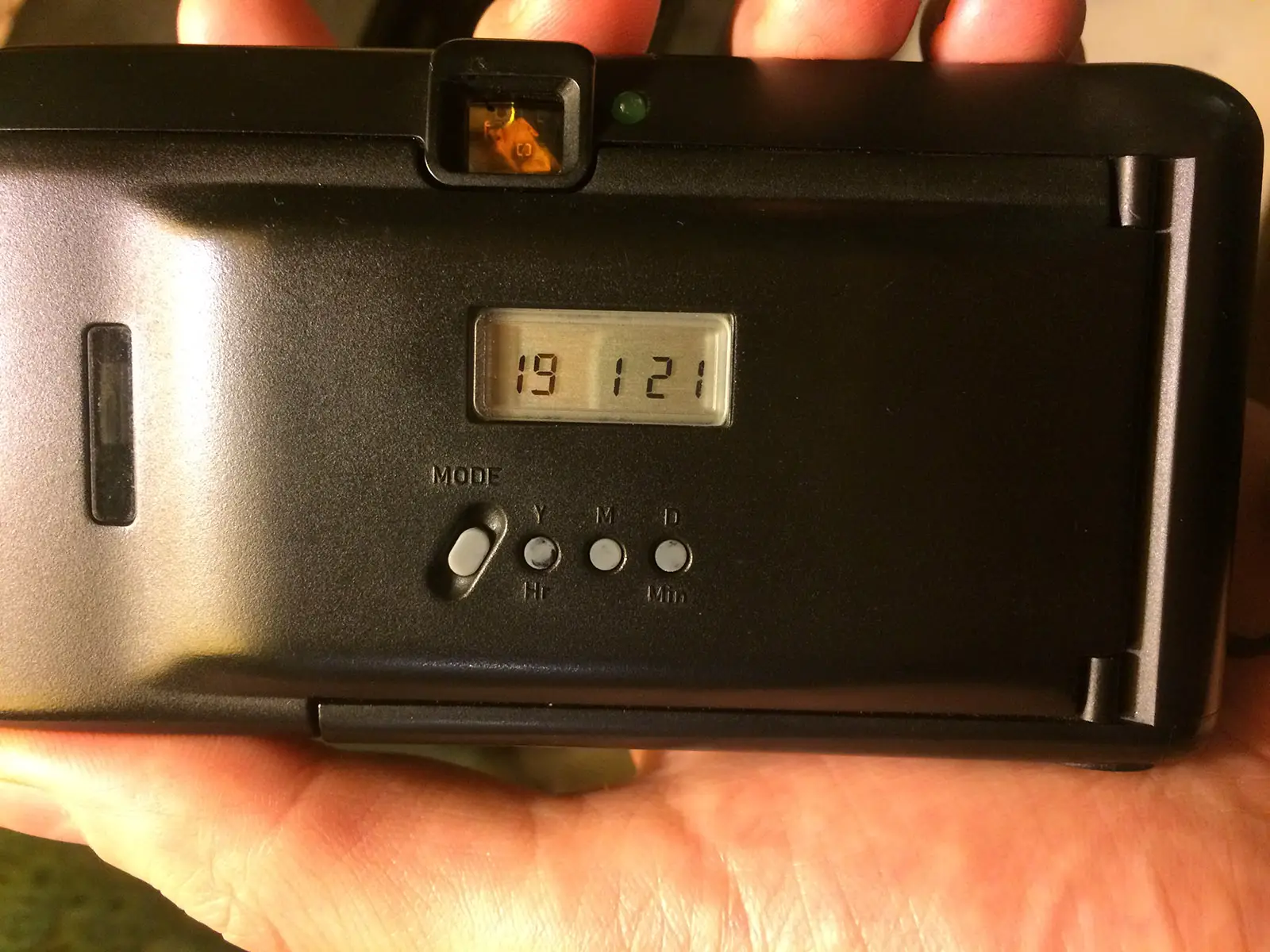Photographs freeze time. They capture the light reflected from objects that happen to occupy a particular space and time, and for me, those objects are often my friends. I know that the light reflected from those objects (my friends) is fleeting. Thus, I hope to preserve those fleeting moments in little drawings of light.
The photographs I take serve as my prosthetic memory–a catalog of images that’s too vast to be contained within my own brain or that is at least too difficult to be quickly and accurately recalled. In order to enhance my prosthetic memory, I prefer to use cameras which imprint the date onto the photograph, so that I know precisely when the photograph was taken. My current tool of choice for doing so is a Minolta AF101r. However, I recently discovered that the range of the quartz date function only spans from ‘80 – ‘19. Strangely, the camera wasn’t manufactured until 1994, so the inclusion of dates ranging from ‘80 -’93 is puzzling. But in any event, it seems that the folks at Minolta weren’t anticipating that anyone would still be using this camera more than 25 years after its inception. On the other hand, once 2080 rolls around, the camera may have a new lease on life. But given that I might not make it until 2080, and given that the quartz date function is a crucial one for me, I’ll have to find a new camera.

I recently purchased an Olympus Stylus Epic Zoom, but I found that the date range on that camera gives me just one additional measly decade. The top end of the date range on that camera terminates at ‘30. I’m currently 30 years old, and I hope to continue taking film photographs throughout what I hope is a long life, and I’d like to find a camera that can keep up.
I know I could get a brand new Nikon F6 with date imprint that extends well into the future, but I love using cheap plastic point-and-shoots for capturing candid moments of my friends. The small cameras are easy to slip into a pocket and are not as intimidating to my subjects as a full-sized SLR would be.
I’m disappointed by the pessimism of the camera manufacturers of the 1990s who were unable to see that their products would still be functional and useful for many decades. Brands like Minolta, Nikon and Olympus must have seen the writing on the wall as digital cameras began to creep into the market, and it became obvious that film’s glory days were numbered. The resurgence of film as medium has forced film enthusiasts to grapple with the many difficulties of the aging photographic instruments they are forced to use, since so few manufacturers are churning out brand new film cameras. The quartz date problem is just one among many. However, extending the date range of a digital readout seems like it would have required very little additional effort on the part of the manufacturer, and the oversight there is quite unfortunate. I’m sure these date backs could probably be “hacked” to display a wider range, but I don’t know if it’s worth the effort. Eventually I may have to manually record the dates of my exposures in a notebook and then affix the date to my prints later, but I do still hope to find a compact camera with a generous date range. The good news is I still have over a decade to figure it out.
You can see my photos at taylorervin.com
Share this post:









Comments
Eric Manten on A Quartz Date Dilemma – By Taylor Ervin
Comment posted: 07/02/2019
Stuart Herrington on A Quartz Date Dilemma – By Taylor Ervin
Comment posted: 07/02/2019
At the worse case scenario I set it to by birth date (1987) for taking photos on my birthday, every year.
I've also wondered if there is a hack for the dateback, sometimes electronic functions like this are as simple as flicking a switch, but I imagine a date back would probably involve using a wire, computer or soldering.
Your point and shoot that goes to 2030 is probably the same date back as every point and shoot before digital took over completely.
You never know, people might start making film cameras again... Maybe Bellamy Hunt will bang one on his high end film camera... If it ever gets made...
Tom Perry on A Quartz Date Dilemma – By Taylor Ervin
Comment posted: 07/02/2019
Comment posted: 07/02/2019
Tom Perry on A Quartz Date Dilemma – By Taylor Ervin
Comment posted: 08/02/2019
Have had a play with the 24EW, and it felt like a quality piece of kit. All the 2001-era Pentax have a nice feel thanks to the aluminium shell, the Espio 150SL Date and 28SW also had it. The last Pentax series is the Espio V series in 2003, which are closer in feel to the Samsung - the date versions should have similar end dates too.
Johnny on A Quartz Date Dilemma – By Taylor Ervin
Comment posted: 08/02/2019
https://www.japancamerahunter.com/2018/08/camera-geekery-tokyo-2020-olympics-quartz-date-camera-guide/
Comment posted: 08/02/2019
Comment posted: 08/02/2019
Bill on A Quartz Date Dilemma – By Taylor Ervin
Comment posted: 09/02/2019
Comment posted: 09/02/2019
Bill on A Quartz Date Dilemma – By Taylor Ervin
Comment posted: 10/02/2019
Robert on A Quartz Date Dilemma – By Taylor Ervin
Comment posted: 11/02/2019
Tom Perry on A Quartz Date Dilemma – By Taylor Ervin
Comment posted: 09/03/2019
It is the Kyocera Yashica Zoomdate 165 SE.
David on A Quartz Date Dilemma – By Taylor Ervin
Comment posted: 01/02/2020
John Rolling on A Quartz Date Dilemma – By Taylor Ervin
Comment posted: 17/04/2020